Features
Media related missions and meeting Marcos in the Philippines

Excerpted from volume ii of the Sarath Amunugama autobiography
As Director of Information in 1969 I was the first Sri Lankan contact of the Asian Mass Communication and Information Centre [AMIC] which was established in Singapore .This Centre was supported by the Government of Singapore and largely financed by the Freidrich Ebert Stiftung of West Germany. The FES was the NGO of the SPD or Social Democratic Party. At that time it was left of centre in politics and specialized in trade union and media development.
An Indian Journalist cum media scholar Lakshmana Rao was appointed the first Secretary-General of AMIC. He was a student of Wilbur Schramm, a notable media researcher and University teacher in the US. Rao soon undertook a tour of Asian countries to introduce AMIC and drum up support for this new venture. Since there was a FES office in Colombo it would have nominated me to be the local counterpart and Rao visited me in office and we agreed to collaborate in research and training.
Rao and I got on well and we were able to send many of our scholars and media officials for seminars and training courses to Singapore. During this time travel facilities to journalists were not freely available and AMIC became a popular institution both for training and duty free shopping. DC Ranatunga whom I recommended to be the AMIC representative in Sri Lanka wrote:
“One day I got a call from Sarath Amunugama, then Director of Information. “Would you like to go to Singapore?” he asked me. Having been good friends with common interests I asked him not to pull my leg. He told me that a friend was with him with an invitation from a new organization on mass communication. They had sent an invitation and an air ticket for a representative from Sri Lanka. At a time when foreign travel was virtually banned, I was thrilled with the offer but I told Sarath that I was no longer a journalist and he should pick someone else. He insisted I should go having been in the field of journalism for over 10 years and able to make a useful contribution. The event helped me to make contact with a host of media men from Asia and AMIC got off to a flying start.
AMIC’s live wire was Lakshmana Rao, an extremely amiable person. He told me a regional conference would have to be organized in Colombo and I gladly agreed. We held the conference at Galle Face Hotel. I persuaded Arthur C Clarke to deliver the keynote address. The Conference delegates were delighted to listen to him and to chat to him after his presentation.
After some time I was appointed to the Governing Board of AMIC. It was a high level group of Asian media personalities and included Roy Daniel, the Director of Information of Singapore as Chairman, Roshian Anwer [Indonesia], Somkuan Kaviya [Thailand], Chanchal Sarkar [India], Sir Charles Moses [Australia], Dol Ramli [Malaysia] and myself. Hormoko, a well-known Indonesian journalist also joined us. Later he became the Minister of Information under Suharto.
From the Phillipines Flore Rosario – Braid became an AMIC associate. We would meet every quarter in Singapore to plan AMIC programmes and review the budget. Since AMIC was the only media ‘think tank’ for Asia we had considerable influence on making media policy and in linking the nascent media departments of the universities in the region with each other. We held regular seminars in Asian countries, usually within universities, which helped to draw attention of governments to the role of media and media education.
It was the biggest network of media experts in Asia and western universities also began to collaborate with us. Everett Rogers from the US and Micheal Kunzik of FRG were reputed communications scholars who were associated with us. AMIC began its operations from a Singapore hotel. After studying its activities the Singapore Government provided AMIC with a large bungalow on Newton Road close to busy Orchard road. At that time Lee Kuan Yew was a favourite of the German Foundations whose Asian operations were conducted through their regional offices located in Singapore. Much later in time these premises were taken over for the construction of the Newton Circle MRT station and AMIC moved to the Campus of Nanyang University.
However by the late 1970s AMIC ran into trouble. Lakshmana Rao’s autocratic ways did not please the FES or the Singapore Government. Even the Asian scholars were unhappy about his dependence on a few cronies. Due to his powers and FES not looking at the accounts of AMIC, it was found to be insolvent. The original agreement was for the regional administrations to contribute their share for the upkeep of AMIC. That did not happen as Rao insisted on keeping everything within a small circle of AMIC supporters who were his personal friends.
In this hubbub Rao resigned and AMIC was left headless and Dr. Sinha who was an assistant Director was asked to oversee the institution. He was ably supported by a Sri Lankan journalist Guy de Fontgalland who was another employee of AMIC. Fontgalland who was the Jaffna correspondent of a Sri Lankan newspaper became a nationally known figure because of his excellent coverage of a Hindu Temple entry crisis which became top regional news.
When a well-known temple in Mavaddipuram in north Sri Lanka refused to open its doors to so called low castes in the peninsula there was a protest and an attempt by a group of worshippers to forcibly enter the Temple. This was resisted by a former Minister and ‘enfant terrible’ Suntheralingam, a high caste or Vellala leader from a distinguished Jaffna family. He was a brilliant Cambridge educated mathematician who was a Professor in the Ceylon University. He was an advisor to D.S. Senanayake in the struggle for national independence.
In fact Suntheralingam was credited with providing mathematical evidence for DS to make submissions regarding ethnic representation to allay alleged British fears of a Sinhala steamroller majority after Independence. He was given the important portfolio of Trade in DS’s first Cabinet. However when the bill which in effect disenfranchised the estate Tamil labour was passed in Parliament, he resigned and became an implacable foe of the government. It must be noted here that G. G. Ponnambalam his rival did not vote against that bill. He remained as Minister of Industries much to Suntharalingam’s displeasure.
He tried to make a comeback to public acclaim by appealing to the caste prejudices of the Vellala Tamils by obstructing the entrance of the Harijans to the Temple. Fontgallend who was a Catholic went to town on this issue. He was admired by the Colombo newspaper establishment and was brought down to Colombo to work as their Tamil affairs specialist. From there with his strong personality and flair for journalism he appealed to Rao and was hired as an assistant Director to AMIC.
From then on it was plain sailing for Guy. He was extremely popular among AMIC members and with the departure of Rao became the power behind Sinha who was a social science researcher from the University of Patna without much administrative experience. Earlier he had played the role of Rao’s hatchet man .But with his bosses departure Sinha turned to Guy Fontgalland to manage the centre. His concern was mostly to stay on in Singapore because he had moved over bag and baggage from Patna.
How all this affected me was that Sinha and Fontgalland had selected me among themselves to be their ally in the AMIC management committee in their negotiations with the FES. This was a shrewd move because the FES representative Reinhard Keune was my friend who helped in setting up our television training centre in Colombo with FES funding. Through Reinhard I came to know the FES top brass ensconced then in their headquarters in Bad Godesberg, near Cologne, which was the provisional capital of the FRG. Later in time FES moved to Berlin when the capital of united Germany was shifted there.
Another lucky coincidence was that the German expert sent to equip our Film Unit under German aid was Dieter Rauch. Dieter had earlier worked with FES and had given a glowing report about the cooperation of the Ministry of State in implementing that programme. All this gave the idea to Sinha and Fontgalland that if I could be persuaded to head AMIC it would be a way out of their uncertain future after the departure of Lakshmana Rao.
Development Information Network
At about this time I was offered a short term assignment by UNDP, the development arm of the United Nations. The communications unit of the UN in New York, with whom the distinguished Sri Lankan journalist Tarzie Vittachi was associated as an advisor and was working on a project to use communications as a way of empowering rural small farmers to get a fair price for their products. Many field studies had shown that the funds allocated for rural development by UN agencies were not yielding results by way of improving the life chances of the rural poor. Many leaders, bureaucrats and middle men were siphoning off a large part of the aid money and the UN was getting a bad name.
Could media – basically radio and TV – help in keeping the farmers informed of market prices for their products and also help in agricultural extension to raise productivity? A pilot project was proposed and, in typical UN style, a high level delegation was to meet the heads of state of the Philipines, Bangladesh, Sri Lanka and Fiji to apprise them of this signature project of the UN and to solicit their support.
As the leader of the two man delegation the UNDP chose Dr. Hernan Santa-Crusz, former Foreign Minister of Mende’s Cabinet in Chile and ex Deputy Secretary-General of the Food and Agricultural Organisation. For the post of second commissioner the UNDP nominated me. This was a signal honour which showed that I was being recognized as a ‘brand’ in the field of communications. I suspected that Tarzie may have had a hand in my nomination as he and my friend Roberto Savio of Inter Press Service were regularly consulted by UN agencies on communications matters.
Savio was a great friend of Juan Somavia – the famous Chilian development economist who fled to Mexico during the reign of terror unleashed by Pinochet. Somavia was the son in law of Santa Crusz and the reputed UN old boys network may have been working to get us together for this mission. Hernan and I were summoned to New York for a briefing while our itinerary was worked out through the UNDP Resident Representatives in the countries we were to visit.
Hernan Santa Crusz was a big built, well dressed, veteran diplomat who was very conscious of his high Ambassadorial status and was full of old world diplomatic charm. He was delighted when Heads of State and Ministers referred to him as ‘Your Excellency’. In our travels throughout Asia I learnt much about Latin America and particularly about Allende and his murder by the army which had close links with the CIA.
He also told me about the intrigues in FAO. He had canvassed for the post of Director General of FAO but had been pipped at the post by Ambassador Sen who was a member of the Indian Civil Service. My friend Hernan believed that India had collaborated with the US to deprive him of the topmost position in FAO because of his Allende connection. This was my first visit to New York and the week-long stay in a small hotel on Lexington and 4th street close to the UN building in Manhattan, gave me a splendid opportunity to explore a city which I got to know well in later years. I also got familiar with the UN practice of drinks parties in office after the end of the days work.
It was not possible like in leisurely Colombo to have parties in late evenings. Homes were located far away. So small office parties were held in the same office right after work. I got used to this when I was in Paris and would return home after office parties in a slightly inebriated state. Both in New York and Paris we could buy a few bottles in the UN commissary at duty free rates. They were well patronized by the staff who were envied by our other friends in business houses who did not have such duty free privileges.
We were never short of liquor in Paris because Ginige and our staff in the Sri Lanka embassy had quotas for duty free bottles. Our Sri Lankan visitors, used to rations at home, were amazed when liquor was freely served in parties that we had in their honour. Every year we had a delegation of senior police officers visiting France for meetings of Interpol. They were entertained right royally by us at house parties where drinks were in abundance and they could be persuaded to give us inside information about inquiries back home. In particular I remember startling disclosures about the disappearance of Upali’s aircraft, by the CID officer who had been designated by the President to investigate that tragedy.
After the initial briefings I returned to Colombo and through the UNDP Office here coordinated my visits to the countries assigned. The first of the meetings were to be in Manila and included a meeting with President Marcos in his Malcanyang Palace. Fortunately for me the UNDP Resident Representative in Manila was Devarajan, a senior ex-CCS officer who too had taken early retirement and joined the UN. He had access to all the top personalities in Manila and had arranged several high level meetings which was a pleasant surprise for Santa Crusz who was nervous that his standing may not figure so much in Asia as in Latin America.
Devarajan had set up meetings with Marcos and Foreign Minister Romulo who was now in his dotage. The meeting with Marcos was a memorable one. We had entered the scene when the US which had backed him fully at the beginning was now disengaging largely due to a barrage of criticism from the Western media. Media was highlighting the massive corruption of his regime and the extravagance of his wife Imelda Marcos, an ex-beauty queen and dominant personality who towered over Marcos who was a slight figure.
His short stature obviously troubled him. He met us after climbing onto a small platform to greet us from on high as the accompanying photo will show. Marcos was pleased to see us because only the week previously he was on the cover of TIME magazine with a devastating story of corruption and cronyism in the Philippines. He was very angry and receptive to our suggestion to improve his national Press agency.
The Phillipines was so Americanized that its media was a pale imitation of the US model. The appalling poverty of the population was covered up by the elite which was super rich. I remember that later when I visited Manila for an annual General meeting of the Asian Development Bank we found that the slum areas were boarded up and the poor were not allowed to emerge from their homes till the conference was over.
Hernan Santa Crusz and I did not know that US policy makers had already decided to replace Marcos with the Harvard educated, super rich and populist Aquino. Aquino however was- assassinated by Marcos’s goons when he landed in Manila Airport. This further aggravated the concern of the international community who then brought in his wife Corazon (Cory) Aqino When we met him, Marcos told us about his achievements in cleaning up gun toting Manila and was indignant that he was being criticized after dancing so long to the US tune. He may have known that his days were numbered because the grape vine in Manila, which is famous for its gossip, told us that his wife was stashing away large sums of dollars abroad.
Marcos seemed weary but he was very courteous and assured us of his full support. With Devarajan as the UN coordinator our project could take off and we sent an optimistic report to New York. Writing a report with a veteran like Santa Crusz I learnt about making a presentation in UNese language which comes after long experience in the international system. It was a good lesson which helped me when I joined UNESCO.
Devarajan also took us to see Carlos Romulo who was a national icon having been involved in the fate of the Philippines in the early days following the second World War, as a friend of the western camp. His interventions in the UN were mostly as a mouthpiece of the US. He thereby managed to get a lot of publicity. He was a favourite of the TIME magazine and I remembered reading about him as a schoolboy. He and Ramon Magsaysay were presented as the popular face of their country at that time. Though old he was quite feisty and asked me about Sir John Kotelawala whose guest he had been at Kandawala. He ran a well-appointed office and had a bevy of good looking Philipinas running around. Like his friend Kotelawala, he also was a social butterfly who enjoyed partying and female company.
Features
Trade preferences to support post-Ditwah reconstruction
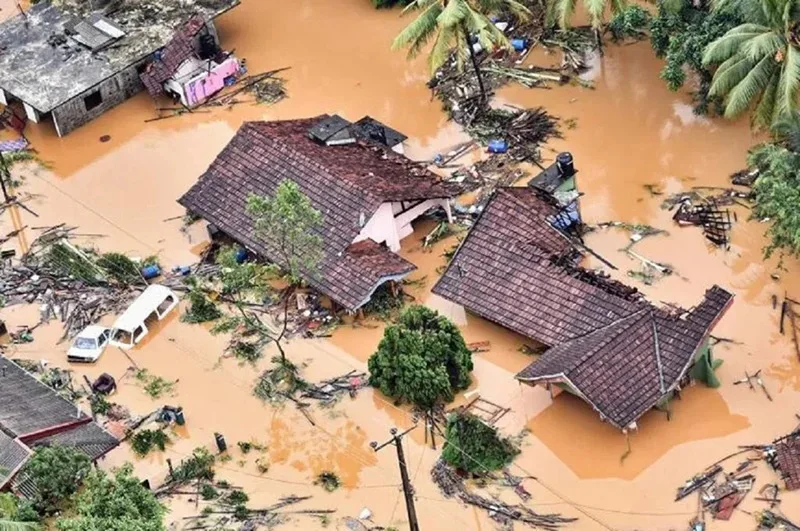
The manner in which the government succeeded in mobilising support from the international community, immediately after the devastating impact of Cyclone Ditwah, may have surprised many people of this country, particularly because our Opposition politicians were ridiculing our “inexperienced” government, in the recent past, for its inability to deal with the international community effectively. However, by now it is evident that the government, with the assistance of the international community and local nongovernmental actors, like major media organisations, has successfully managed the recovery efforts. So, let me begin by thanking them for what they have done so far.
Yet, some may argue that it is not difficult to mobilise the support for recovery efforts from the international community, immediately after any major disaster, and the real challenge is to sustain that support through the next few weeks, months and years. Because the recovery process, more specifically the post-recovery reconstruction process, requires long-term support. So, the government agencies should start immediately to focus on, in addition to initial disaster relief, a longer-term strategy for reconstruction. This is important because in a few weeks’ time, the focus of the global community may shift elsewhere … to another crisis in another corner of the world. Before that happens, the government should take initiatives to get the support from development partners on appropriate policy measures, including exceptional trade preferences, to help Sri Lanka in the recovery efforts through the medium and the long term.
Use of Trade Preferences to support recovery and reconstruction
In the past, the United States and the European Union used exceptional enhanced trade preferences as part of the assistance packages when countries were devastated by natural disasters, similar to Cyclone Ditwah. For example:
- After the devastating floods in Pakistan, in July 2010, the EU granted temporary, exceptional trade preferences to Pakistan (autonomous trade preferences) to aid economic recovery. This measure was a de facto waiver on the standard EU GSP (Generalised Scheme of Preferences) rules. The preferences, which were proposed in October 2010 and were applied until the end of 2013, effectively suspended import duties on 75 types of goods, including textiles and apparel items. The available studies on this waiver indicate that though a significant export hike occurred within a few months after the waiver became effective it did not significantly depress exports by competing countries. Subsequently, Pakistan was granted GSP+ status in 2014.
- Similarly, after the 2015 earthquakes in Nepal, the United States supported Nepal through an extension of unilateral additional preferences, the Nepal Trade Preferences Programme (NTPP). This was a 10-year initiative to grant duty-free access for up to 77 specific Nepali products to aid economic recovery after the 2015 earthquakes. This was also a de facto waiver on the standard US GSP rules.
- Earlier, after Hurricanes Mitch and Georges caused massive devastation across the Caribbean Basin nations, in 1998, severely impacting their economies, the United States proposed a long-term strategy for rebuilding the region that focused on trade enhancement. This resulted in the establishment of the US Caribbean Basin Trade Partnership Act (CBTPA), which was signed into law on 05 October, 2000, as Title II of the Trade and Development Act of 2000. This was a more comprehensive facility than those which were granted to Pakistan and Nepal.

What type of concession should Sri Lanka request from our development partners?
Given these precedents, it is appropriate for Sri Lanka to seek specific trade concessions from the European Union and the United States.
In the European Union, Sri Lanka already benefits from the GSP+ scheme. Under this arrangement Sri Lanka’s exports (theoretically) receive duty-free access into the EU markets. However, in 2023, Sri Lanka’s preference utilisation rate, that is, the ratio of preferential imports to GSP+ eligible imports, stood at 59%. This was significantly below the average utilisation of other GSP beneficiary countries. For example, in 2023, preference utilisation rates for Bangladesh and Pakistan were 90% and 88%, respectively. The main reason for the low utilisation rate of GSP by Sri Lanka is the very strict Rules of Origin requirements for the apparel exports from Sri Lanka. For example, to get GSP benefits, a woven garment from Sri Lanka must be made from fabric that itself had undergone a transformation from yarn to fabric in Sri Lanka or in another qualifying country. However, a similar garment from Bangladesh only requires a single-stage processing (that is, fabric to garment) qualifies for GSP. As a result, less than half of Sri Lanka’s apparel exports to the EU were ineligible for the preferences in 2023.
Sri Lanka should request a relaxation of this strict rule of origin to help economic recovery. As such a concession only covers GSP Rules of Origin only it would impact multilateral trade rules and would not require WTO approval. Hence could be granted immediately by the EU.
United States
Sri Lanka should submit a request to the United States for (a) temporary suspension of the recently introduced 20% additional ad valorem duty and (b) for a programme similar to the Nepal Trade Preferences Programme (NTPP), but designed specifically for Sri Lanka’s needs. As NTPP didn’t require WTO approval, similar concessions also can be granted without difficulty.
Similarly, country-specific requests should be carefully designed and submitted to Japan and other major trading partners.
(The writer is a retired public servant and can be reached at senadhiragomi@gmail.com)
by Gomi Senadhira
Features
Lasting power and beauty of words
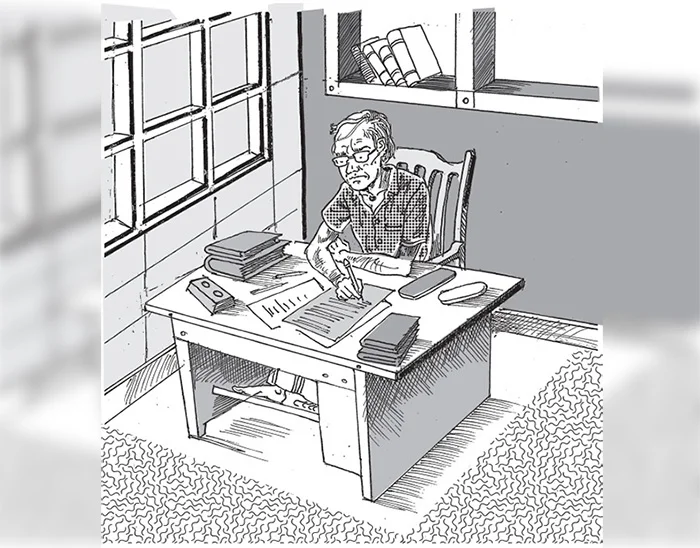
Novelists, poets, short story writers, lyricists, politicians and columnists use words for different purposes. While some of them use words to inform and elevate us, others use them to bolster their ego. If there was no such thing called words, we cannot even imagine what will happen to us. Whether you like it or not everything rests on words. If the Penal Code does not define a crime and prescribe a punishment, judges will not be able to convict criminals. Even the Constitution of our country is a printed document.
A mother’s lullaby contains snatches of sweet and healing words. The effect is immediate. The baby falls asleep within seconds. A lover’s soft and alluring words go right into his or her beloved. An army commander’s words encourage soldiers to go forward without fear. The British wartime Prime Minister Winston Churchill’s words still ring in our ears: “… we shall defend our Island, whatever the cost may be, we shall fight on the beaches, we shall fight on the landing grounds, we shall fight in the fields and in the streets, we shall fight in the hills; we shall never surrender …”
Writers wax eloquent on love. English novelist John Galsworthy wrote: “Love is no hot-house flower, but a wild plant, born of a wet night, born of an hour of sunshine; sprung from wild seed, blown along the road by a wild wind. A wild plant that, when it blooms by chance within the hedge of our gardens, we call a flower; and when it blooms outside we call a weed; but flower or weed, whose scent and colour are always wild.” While living in a world dominated by technology, we often hear a bunch of words that is colourless and often cut to verbal ribbons – “How R U” or “Luv U.” Such words seem to squeeze the life out of language.
Changing medium
Language is a constantly changing medium. New words and forms arrive and old ones die out. Whoever thought that the following Sinhala words would find a place in the Oxford English Dictionary? “Asweddumize, Avurudu, Baila, Kiribath, Kottu Roti, Mallung, Osari, Papare, Walawwa and Watalappan.” With all such borrowed words the English language is expanding and remains beautiful. The language helps us to express subtle ideas clearly and convincingly.
You are judged by the words you use. If you constantly use meaningless little phrases, you will be considered a worthless person. When you read a well-written piece of writing you will note how words jump and laugh on the paper or screen. Some of them wag their tails while others stand back like shy village belles. However, they serve a useful purpose. Words help us to write essays, poems, short stories and novels. If not for the beauty of the language, nobody will read what you write.
If you look at the words meaningfully, you will see some of them tap dancing while others stand to rigid attention. Big or small, all the words you pen form part of the action or part of the narrative. The words you write make your writing readable and exciting. That is why we read our favourite authors again and again.
Editorials
If a marriage is to succeed, partners should respect and love each other. Similarly, if you love words, they will help you to use them intelligently and forcefully. A recent survey in the United States has revealed that only eight per cent of people read the editorial. This is because most editorials are not readable. However, there are some editorials which compel us to read them. Some readers collect such editorials to be read later.
Only a lover of words would notice how some words run smoothly without making a noise. Other words appear to be dancing on the floor. Some words of certain writers are soothing while others set your blood pounding. There is a young monk who is preaching using simple words very effectively. He has a large following of young people addicted to drugs. After listening to his preaching, most of them have given up using illegal drugs. The message is loud and clear. If there is no demand for drugs, nobody will smuggle them into the country.
Some politicians use words so rounded at the edges and softened by wear that they are no longer interesting. The sounds they make are meaningless and listeners get more and more confused. Their expressions are full of expletives the meaning of which is often soiled with careless use of words.
Weather-making
Some words, whether written or spoken, stick like superglue. You will never forget them. William Vergara in his short essay on weather-making says, “Cloud-seeding has touched off one of the most baffling controversies in meteorological history. It has been blamed for or credited with practically all kinds of weather. Some scientists claim seeding can produce floods and hail. Others insist it creates droughts and dissipates clouds. Still others staunchly maintain it has no effect at all. The battle is far from over, but at last one clear conclusion is beginning to emerge: man can change the weather, and he is getting better at it.”
There are words that nurse the ego and heal the heart. The following short paragraph is a good example. S. Radhakrishnan says, “In every religion today we have small minorities who see beyond the horizon of their particular faith, not through religious fellowship is possible, not through the imposition of any one way on the whole but through an all-inclusive recognition that we are all searchers for the truth, pilgrims on the road, that we all aim at the same ethical and spiritual standard.”
There are some words joined together in common phrases. They are so beautiful that they elevate the human race. In the phrase ‘beyond a shadow of doubt’, ‘a shadow’ connotes a dark area covering light. ‘A doubt’ refers to hesitancy in belief. We use such phrases blithely because they are exquisitely beautiful in their structure. The English language is a repository of such miracles of expression that lead to deeper understanding or emphasis.
Social media
Social media use words powerfully. Sometimes they invent new words. Through the social media you can reach millions of viewers without the intervention of the government. Their opinion can stop wars and destroy tyrants. If you use the right words, you can even eliminate poverty to a great extent.
The choice of using powerful words is yours. However, before opening your mouth, tap the computer, unclip a pen, write a lyric or poem, think twice of the effect of your writing. When you talk with a purpose or write with pleasure, you enrich listeners and readers with your marvellous language skills. If you have a command of the language, you will put across your point of view that counts. Always try to find the right words and change the world for a better place for us to live.
By R. S. Karunaratne
karunaratners@gmail.com
Features
Why Sri Lanka Still Has No Doppler Radar – and Who Should Be Held Accountable
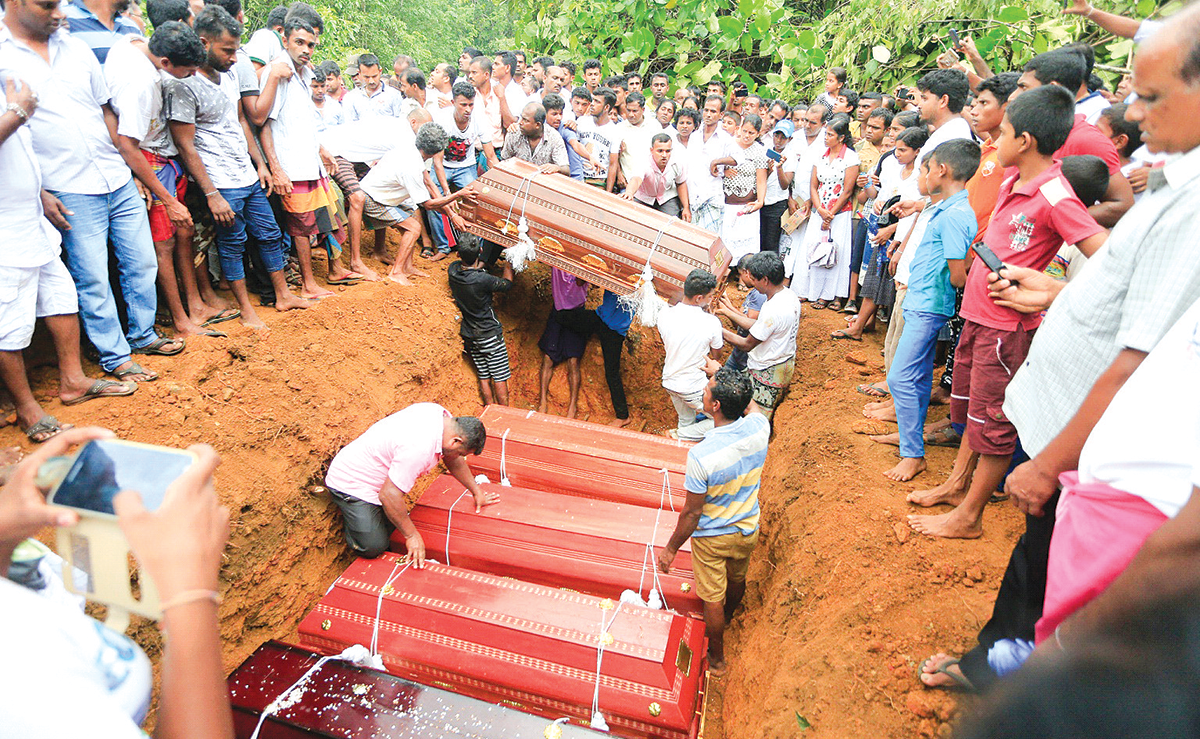
Eighteen Years of Delay:
Cyclone Ditwah has come and gone, leaving a trail of extensive damage to the country’s infrastructure, including buildings, roads, bridges, and 70% of the railway network. Thousands of hectares of farming land have been destroyed. Last but not least, nearly 1,000 people have lost their lives, and more than two million people have been displaced. The visuals uploaded to social media platforms graphically convey the widespread destruction Cyclone Ditwah has caused in our country.
The purpose of my article is to highlight, for the benefit of readers and the general public, how a project to establish a Doppler Weather Radar system, conceived in 2007, remains incomplete after 18 years. Despite multiple governments, shifting national priorities, and repeated natural disasters, the project remains incomplete.
Over the years, the National Audit Office, the Committee on Public Accounts (COPA), and several print and electronic media outlets have highlighted this failure. The last was an excellent five-minute broadcast by Maharaja Television Network on their News First broadcast in October 2024 under a series “What Happened to Sri Lanka”
The Agreement Between the Government of Sri Lanka and the World Meteorological Organisation in 2007.
The first formal attempt to establish a Doppler Radar system dates back to a Trust Fund agreement signed on 24 May 2007 between the Government of Sri Lanka (GoSL) and the World Meteorological Organisation (WMO). This agreement intended to modernize Sri Lanka’s meteorological infrastructure and bring the country on par with global early-warning standards.
The World Meteorological Organisation (WMO) is a specialized agency of the United Nations established on March 23, 1950. There are 193 member countries of the WMO, including Sri Lanka. Its primary role is to promote the establishment of a worldwide meteorological observation system and to serve as the authoritative voice on the state and behaviour of the Earth’s atmosphere, its interaction with the oceans, and the resulting climate and water resources.
According to the 2018 Performance Audit Report compiled by the National Audit Office, the GoSL entered into a trust fund agreement with the WMO to install a Doppler Radar System. The report states that USD 2,884,274 was deposited into the WMO bank account in Geneva, from which the Department of Metrology received USD 95,108 and an additional USD 113,046 in deposit interest. There is no mention as to who actually provided the funds. Based on available information, WMO does not fund projects of this magnitude.
The WMO was responsible for procuring the radar equipment, which it awarded on 18th June 2009 to an American company for USD 1,681,017. According to the audit report, a copy of the purchase contract was not available.
Monitoring the agreement’s implementation was assigned to the Ministry of Disaster Management, a signatory to the trust fund agreement. The audit report details the members of the steering committee appointed by designation to oversee the project. It consisted of personnel from the Ministry of Disaster Management, the Departments of Metrology, National Budget, External Resources and the Disaster Management Centre.
The Audit Report highlights failures in the core responsibilities that can be summarized as follows:
· Procurement irregularities—including flawed tender processes and inadequate technical evaluations.
· Poor site selection
—proposed radar sites did not meet elevation or clearance requirements.
· Civil works delays
—towers were incomplete or structurally unsuitable.
· Equipment left unused
—in some cases for years, exposing sensitive components to deterioration.
· Lack of inter-agency coordination
—between the Meteorology Department, Disaster Management Centre, and line ministries.
Some of the mistakes highlighted are incomprehensible. There is a mention that no soil test was carried out before the commencement of the construction of the tower. This led to construction halting after poor soil conditions were identified, requiring a shift of 10 to 15 meters from the original site. This resulted in further delays and cost overruns.
The equipment supplier had identified that construction work undertaken by a local contractor was not of acceptable quality for housing sensitive electronic equipment. No action had been taken to rectify these deficiencies. The audit report states, “It was observed that the delay in constructing the tower and the lack of proper quality were one of the main reasons for the failure of the project”.
In October 2012, when the supplier commenced installation, the work was soon abandoned after the vehicle carrying the heavy crane required to lift the radar equipment crashed down the mountain. The next attempt was made in October 2013, one year later. Although the equipment was installed, the system could not be operationalised because electronic connectivity was not provided (as stated in the audit report).
In 2015, following a UNOPS (United Nations Office for Project Services) inspection, it was determined that the equipment needed to be returned to the supplier because some sensitive electronic devices had been damaged due to long-term disuse, and a further 1.5 years had elapsed by 2017, when the equipment was finally returned to the supplier. In March 2018, the estimated repair cost was USD 1,095,935, which was deemed excessive, and the project was abandoned.
COPA proceedings
The Committee on Public Accounts (COPA) discussed the radar project on August 10, 2023, and several press reports state that the GOSL incurred a loss of Rs. 78 million due to the project’s failure. This, I believe, is the cost of constructing the Tower. It is mentioned that Rs. 402 million had been spent on the radar system, of which Rs. 323 million was drawn from the trust fund established with WMO. It was also highlighted that approximately Rs. 8 million worth of equipment had been stolen and that the Police and the Bribery and Corruption Commission were investigating the matter.
JICA support and project stagnation
Despite the project’s failure with WMO, the Japan International Cooperation Agency (JICA) entered into an agreement with GOSL on June 30, 2017 to install two Doppler Radar Systems in Puttalam and Pottuvil. JICA has pledged 2.5 billion Japanese yen (LKR 3.4 billion at the time) as a grant. It was envisaged that the project would be completed in 2021.
Once again, the perennial delays that afflict the GOSL and bureaucracy have resulted in the groundbreaking ceremony being held only in December 2024. The delay is attributed to the COVID-19 pandemic and Sri Lanka’s economic crisis.
The seven-year delay between the signing of the agreement and project commencement has led to significant cost increases, forcing JICA to limit the project to installing only one Doppler Radar system in Puttalam.
Impact of the missing radar during Ditwah
As I am not a meteorologist and do not wish to make a judgment on this, I have decided to include the statement issued by JICA after the groundbreaking ceremony on December 24, 2024.
“In partnership with the Department of Meteorology (DoM), JICA is spearheading the establishment of the Doppler Weather Radar Network in the Puttalam district, which can realize accurate weather observation and weather prediction based on the collected data by the radar. This initiative is a significant step in strengthening Sri Lanka’s improving its climate resilience including not only reducing risks of floods, landslides, and drought but also agriculture and fishery“.
Based on online research, a Doppler Weather Radar system is designed to observe weather systems in real time. While the technical details are complex, the system essentially provides localized, uptotheminute information on rainfall patterns, storm movements, and approaching severe weather. Countries worldwide rely on such systems to issue timely alerts for monsoons, tropical depressions, and cyclones. It is reported that India has invested in 30 Doppler radar systems, which have helped minimize the loss of life.
Without radar, Sri Lanka must rely primarily on satellite imagery and foreign meteorological centres, which cannot capture the finescale, rapidly changing weather patterns that often cause localized disasters here.
The general consensus is that, while no single system can prevent natural disasters, an operational Doppler Radar almost certainly would have strengthened Sri Lanka’s preparedness and reduced the extent of damage and loss.
Conclusion
Sri Lanka’s inability to commission a Doppler Radar system, despite nearly two decades of attempts, represents one of the most significant governance failures in the country’s disastermanagement history.
Audit findings, parliamentary oversight proceedings, and donor records all confirm the same troubling truth: Sri Lanka has spent public money, signed international agreements, received foreign assistance, and still has no operational radar. This raises a critical question: should those responsible for this prolonged failure be held legally accountable?
Now may not be the time to determine the extent to which the current government and bureaucrats failed the people. I believe an independent commission comprising foreign experts in disaster management from India and Japan should be appointed, maybe in six months, to identify failures in managing Cyclone Ditwah.
However, those who governed the country from 2007 to 2024 should be held accountable for their failures, and legal action should be pursued against the politicians and bureaucrats responsible for disaster management for their failure to implement the 2007 project with the WMO successfully.
Sri Lanka cannot afford another 18 years of delay. The time for action, transparency, and responsibility has arrived.
(The views and opinions expressed in this article are solely those of the author and do not necessarily reflect the policy or position of any organization or institution with which the author is affiliated).
By Sanjeewa Jayaweera
-

 Features5 days ago
Features5 days agoFinally, Mahinda Yapa sets the record straight
-

 News6 days ago
News6 days agoCyclone Ditwah leaves Sri Lanka’s biodiversity in ruins: Top scientist warns of unseen ecological disaster
-

 Features5 days ago
Features5 days agoHandunnetti and Colonial Shackles of English in Sri Lanka
-

 Business4 days ago
Business4 days agoCabinet approves establishment of two 50 MW wind power stations in Mullikulum, Mannar region
-

 News7 days ago
News7 days agoJetstar to launch Australia’s only low-cost direct flights to Sri Lanka, with fares from just $315^
-
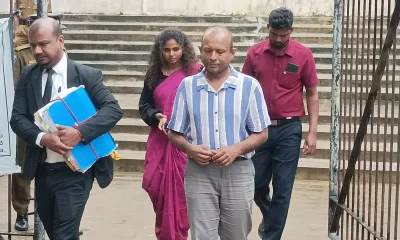
 News4 days ago
News4 days agoGota ordered to give court evidence of life threats
-
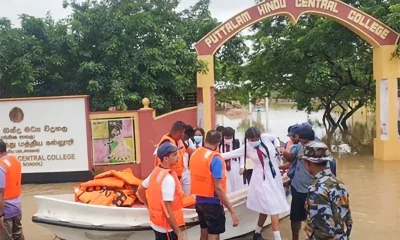
 Features6 days ago
Features6 days agoAn awakening: Revisiting education policy after Cyclone Ditwah
-

 Features4 days ago
Features4 days agoCliff and Hank recreate golden era of ‘The Young Ones’













